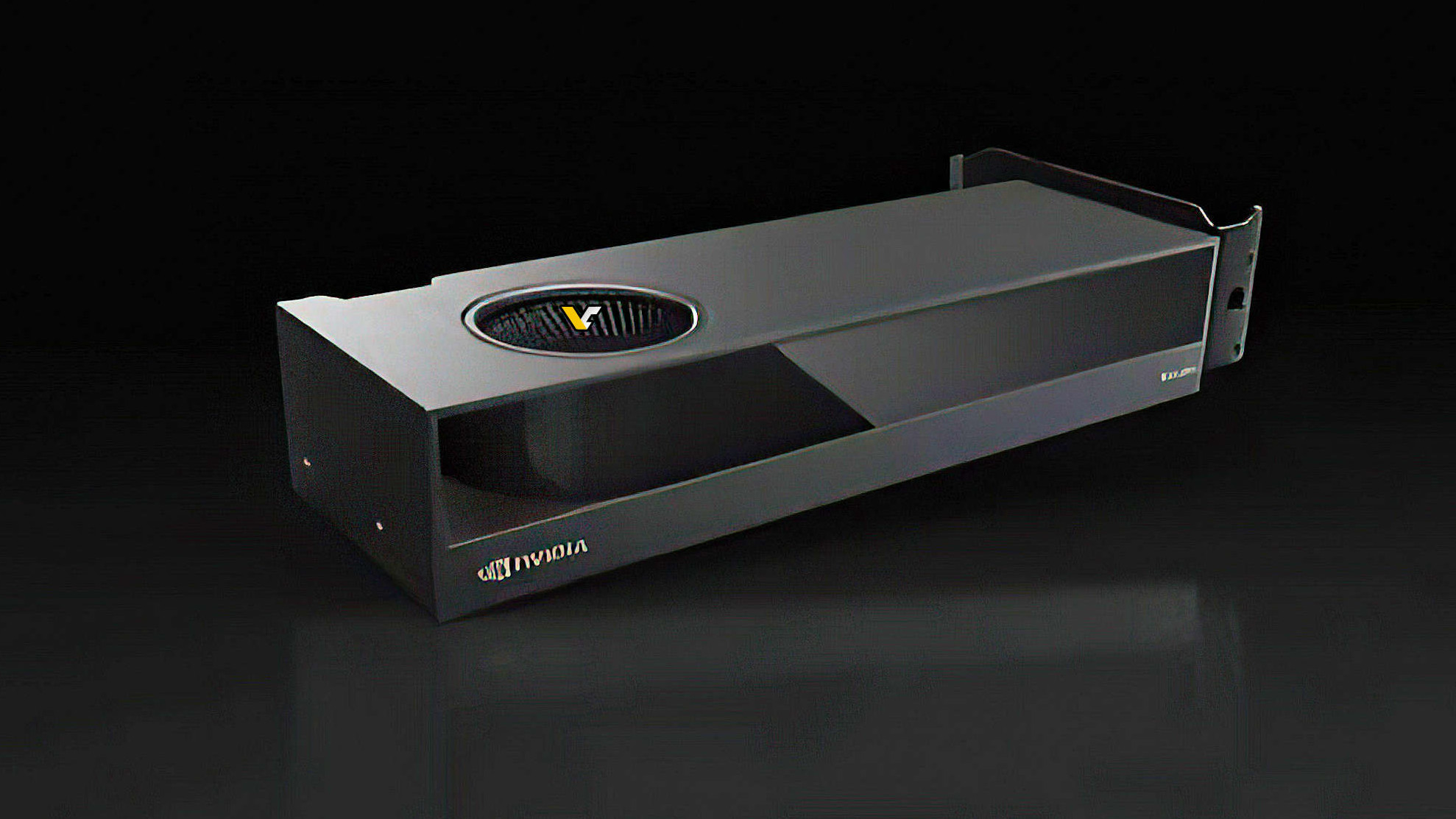Nvidia RTX 2000 entry level workstation cards leak - tipped for release in the coming week
The likely AD104-based GPU with just 8GB RAM will fill the entry-level slot in Nvidia's current RTX Ada workstation graphics stack.

Alongside pre-launch retailer listings, VideoCardz has unearthed a low-res render of a purported RTX 2000 Ada desktop workstation GPU. The source reckons the release date for this entry-level Ada workstation card with 8GB of VRAM is sometime during the coming week.
This new RTX 2000 workstation GPU seems to be yet another AD104-based GPU, with 8GB of (likely ECC) GDDR6 VRAM and PCIe Gen 4 x16 support. It also appears to lack any external power connector, so we should expect a TDP of no greater than 75 Watts (the usual maximum power draw of a PCIe slot).
Two model names listed in the VideoCardz report are the Nvidia RTX 2000 ADA and the Nvidia RTX2000E ADA, with estimated price points of $600-650 and $500-630, respectively. What the "E" suffix signified is currently unconfirmed, but "E" may refer to "Enterprise". It is the cheaper of the two models, though, so perhaps that model is only available when purchasing in bulk.
Since the AD104 is the GPU used in the consumer GeForce RTX 4070 and RTX 4080, this workstation card should in theory be quite powerful for its (potentially SFF) form factor and low wattage. Reducing wattage to this extent will greatly reduce performance, but AD104 provides a strong foundation. Additionally, all of Nvidia's workstation (previously dubbed Quadro) GPUs are sold with blower-style coolers, making them more favorable for multi-GPU stacking in servers and other workstation scenarios.
At the time of writing, an entry-level '2000' model is conspicuous by its absence from Nvidia's listings of Ada architecture RTX GPUs for workstations. The purported Ada Generation RTX 2000 GPU specs line up with a long-due refresh of Nvidia's entry-level workstation video card offerings.
With any luck, this rounding out of the Ada Lovelace workstation offerings may also push Nvidia toward considering new branding for its next generation of workstation GPUs. The naming scheme of workstation Nvidia GPUs has gotten increasingly contrived gen-over-gen since the change, particularly since mainstream RTX GPUs use a nearly identical naming scheme, except focusing on a fixed RTX XX-Y0 range instead of RTX X-000 for each model number.
Needing to add 'Ada Generation' to every product listing made for a current-generation Nvidia workstation GPU seems a little excessive for a system that used to use Quadro branding and some numbers more effectively. Still, we'd be veering off topic if we lingered on this any longer. It is worth mentioning now that Nvidia's Ada Lovelace lineup seems complete, though.
Get Tom's Hardware's best news and in-depth reviews, straight to your inbox.

Christopher Harper has been a successful freelance tech writer specializing in PC hardware and gaming since 2015, and ghostwrote for various B2B clients in High School before that. Outside of work, Christopher is best known to friends and rivals as an active competitive player in various eSports (particularly fighting games and arena shooters) and a purveyor of music ranging from Jimi Hendrix to Killer Mike to the Sonic Adventure 2 soundtrack.
-
35below0 Why bother with any dedicated GPU? Isn't the on board powerfull enough?Reply
The only disadvantage i can think of is that it would require RAM, or need fiddling with in BIOS.
If it's not a gaming PC, or more than a light gaming one, it doesn't need a GPU. How am i braindead on this? What am i missing?